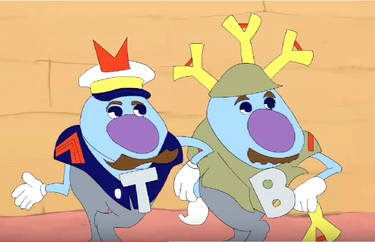Immune system disorders seem to be fairly common in dogs- things like allergies, ear infections, vaccine reactions, food sensitivity, slow recovery from infection, etc. In addition, there are autoimmune diseases, in which the immune system mistakenly attacks the tissues of the body, and some of these can be quite serious. Many breeders, faced with a breeding decision involving a dog with an immune disorder, wonder if the gene for it is dominant or recessive. Most likely, the disorder isn't caused by a single gene, or at least not one that we can identify. In fact, the immune system is extremely - extremely - complex. Like a large, complicated piece of machinery, breaking one seemingly tiny thing can result in an entire system breaking down. Of course, fixing something like this is a challenge, and in the case of the genes of the immune system, the best plan is to make sure it doesn't get broken in the first place.
|
Unfortunately, the usual breeding strategies for purebred dogs are designed to reduce genetic variation in the genes for type, and the genes involved in immune system function are affected as well. In nature, the animals with the highest level of reproductive success (the "fittest" animals) usually have extremely high diversity in the genes of the immune system, so we presume that this high diversity confers an advantage in health. If so, then the compromised diversity of the immune system of dogs could be expected to cause some problems, and there surely are plenty of those.
|
There is nothing like a little summary of how the immune system works to convince somebody that they should work hard not to break it, so to that end I have rounded up a few videos that explain things in the most basic (i.e., cartoon) terms. The first is extremely basic and actually cute. The next one is also basic, you will notice that they only address part of it, and about halfway through you will realize that what is being described is the equivalent of the US armed forces, with foot soldiers, air defenses, the submarine fleet, the intelligence people, all sorts of weaponry, and the central command, with complex defensive and offensive strategies all carefully orchestrated with the goal of defeating the enemy. Knock out the air support and there could be attacks on the ground. Lose a critical weapon system and the enemy can gain strength. It's hard to win, and really easy to lose. Like the military, the immune system wages some extremely complex battles. I think you'll be really impressed.
To select against one gene, we remove a dog from the breeding population, and all of the good genes it might have go with it. You don't notice losing the immune system genes; they don't produce a coat color, or prick ears, or a better topline that you can see and evaluate. You will only preserve the genes of the immune system if you are preserving genetic diversity in general, by using a breed-wide strategy of genetic management. We can beat back bacterial infections with antibiotics if the immune system isn't up to the task, but the autoimmune disorders are quite another thing. Steroids will often help, but the side effects and collateral damage to the body are not benign. And it's not clear how you can "breed away" from something that's broken unless there are dogs with healthy immune systems around to breed to, and how can you know who they are?
Most people don't worry about the health of the immune system when they consider breeding options, or if they do it's down the list a ways from color, size, and other traits. But if we are not deliberately selecting for a healthy immune system, we are likely to break something that is going to be very, very hard to fix.
*** Visit our FACEBOOK pages ***
ICB Institute of Canine Biology
...the latest canine news and research
ICB Breeding for the Future
...the science of animal breeding


